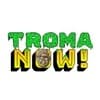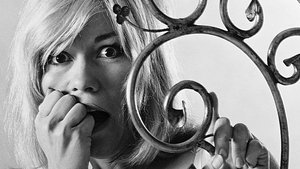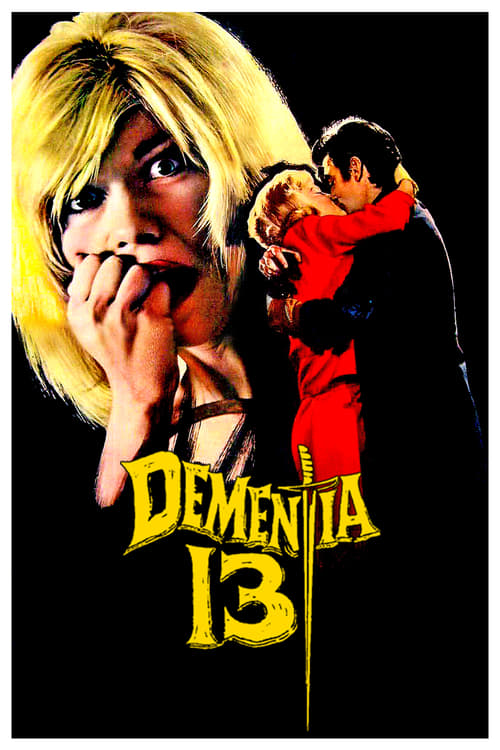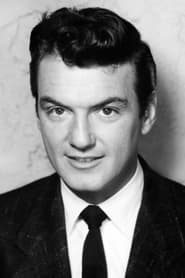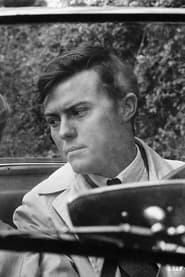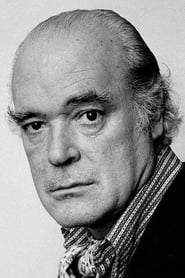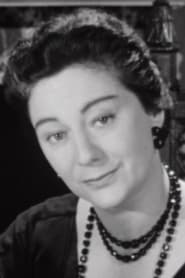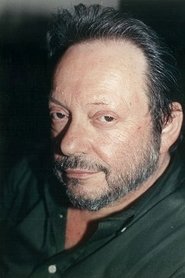Cast
View AllWilliam Campbell
as Richard Haloran
Luana Anders
as Louise Haloran
Bart Patton
as Billy Haloran
Mary Mitchel
as Kane
Patrick Magee
as Justin Caleb
Eithne Dunne
as Lady Haloran
Peter Read
as John Haloran
Karl Schanzer
as Simon
Ron Perry
as Arthur
Derry O'Donavan
as Lillian
Barbara Dowling
as Kathleen
Crew
Director
- Francis Ford Coppola
Writer
- Francis Ford Coppola
Producer
- Roger Corman
Reviews
talisencrw
This was a tad eccentric but proved to me a very delightfully surreal horror film. In watching this, you immediately get the feeling the director has both interesting, out-of-the-ordinary ideas plus the balls to do things his own way. It's flawed, but definitely shows plenty of directing chops and potential for brilliance, just a few years down the road. A bona-fide, low-budget, American classic.
Jul 21, 2016
Wuchak
***Coppola’s version of “Psycho,” sort of***
After the sudden death of her husband, an American woman (Luana Anders) keeps it secret and tries to ingratiate herself to the matriarch at the family’s manor in Ireland in order to extort part of the inheritance. But there’s a dark pall over the family after an accidental drowning seven years earlier, not to mention the specter of a psycho with an axe! William Campbell plays the strange brother and Mary Mitchel his fiancée.
Shot in B&W, “Dementia 13” (1963), aka “The Haunted and the Hunted,” was the theatrical debut for writer/director Francis Ford Coppola after producer Roger Corman offered him to do a low-budget imitation of “Psycho” (1960) in Ireland with funds left over from his movie “The Young Racers,” on which Coppola worked as a sound technician. Actually, this wasn’t technically Coppola’s first film as he did eleven days shooting of Corman’s superior “The Terror” in Big Sur, California.
The story and setting are very different from “Psycho” and its sister English film “Horror Hotel” (aka “The City of the Dead”), which was produced/released at the same time as “Psycho,” although it wasn’t released in America until two years later. Nevertheless, “Dementia 13” is cut from the same B&W horror cloth and shares an infamous plot twist that originated with those two films. Like “Psycho,” there’s a psycho madman, although he prefers an axe to a butcher knife.
Unfortunately, “Dementia 13” isn’t great like “Psycho” or formidable like “Horror Hotel,” mainly because the story is sorta befuddling (like the two bodies of water that aren’t properly differentiated), although most everything’s explained at the end. There’s a good gothic ambiance, but the bewildering storytelling prevents the flick from taking off. And Luana Anders, while okay, is second rate compared to the breathtaking Venetia Stevenson in “Horror Hotel” and Janet Leigh in “Psycho.”
Corman wasn’t happy with what Coppola brought home to California. He (rightly) insisted that certain scenes needed simplified and that more violence was necessary, to which Jack Hill was hired to shoot the additional poacher scenes. A useless prologue was also tacked on to beef-up the runtime, which wasn’t featured on the version I watched. If you’re familiar with Coppola’s later work, like “Youth Without Youth” (2007) and “Twixt” (2011), you know that he has the tendency to overcomplicate scripts. That’s the problem with “Dementia 13.” Still, it definitely upped the slasher ante and influenced that particular horror genre.
The film runs 1 hour, 15 minutes and was shot in Ireland (Howth Castle, Howth, and Ardmore Studios in Bray). It was remade and improved in color in 2017.
GRADE: C
Mar 5, 2019
Thematic Analysis
This Horror/Mystery/Thriller film explores themes of fear and survival, delving into the psychological aspects of human nature when confronted with the unknown. Dementia 13 presents a unique perspective on the horror genre by focusing on the psychological terror rather than relying on typical jump scares.
Director Francis Ford Coppola brings their distinctive visual style to this film, continuing their exploration of themes seen in their previous works while adding new elements. Their approach to pacing and visual storytelling creates a viewing experience that rewards close attention.
Released in 1963, the film exists within a cultural context that now offers viewers historical perspective on the social issues of that era. Its reception demonstrates the diverse reactions to its artistic choices and its place in cinema history.
Did You Know?
- The production of Dementia 13 took approximately 32 months from pre-production to final cut.
- With a budget of $0.0 million, the film represented a significant investment in bringing this story to the screen.
- The final cut of the film runs for 75 minutes, though the director's initial assembly was reportedly 105 minutes long.
- The musical score contains over 66 unique compositions.
- The film contains approximately 1728 individual shots.
- Some visual effects sequences took up to 5 months to complete.
Historical Context
- In 1963, when this film was released:
- Social and cultural revolution was transforming Western societies.
- The space race between the USSR and USA was at its height.
- The film industry was dominated by major studios, with independent cinema still in its early development.
How This Film Stands Out
While Dementia 13 shares thematic elements with other films in its genre, it distinguishes itself through its unique approach to storytelling, visual style, and character development.
Unlike The Devil's Rejects, which focuses more on action than character development, Dementia 13 offers a fresh perspective through its innovative visual language and narrative structure.
While films like Snow White: A Tale of Terror and Metamorphosis explore similar territory, Dementia 13 stands apart through its deeper exploration of its central themes and more complex characterization.
This film's unique contribution to cinema lies in its thoughtful balance of entertainment value and thematic depth, making it a valuable addition to its genre.
Details
- Release Date: September 25, 1963
- Runtime: 1h 15m
- Budget: $30,000
Where to Watch










